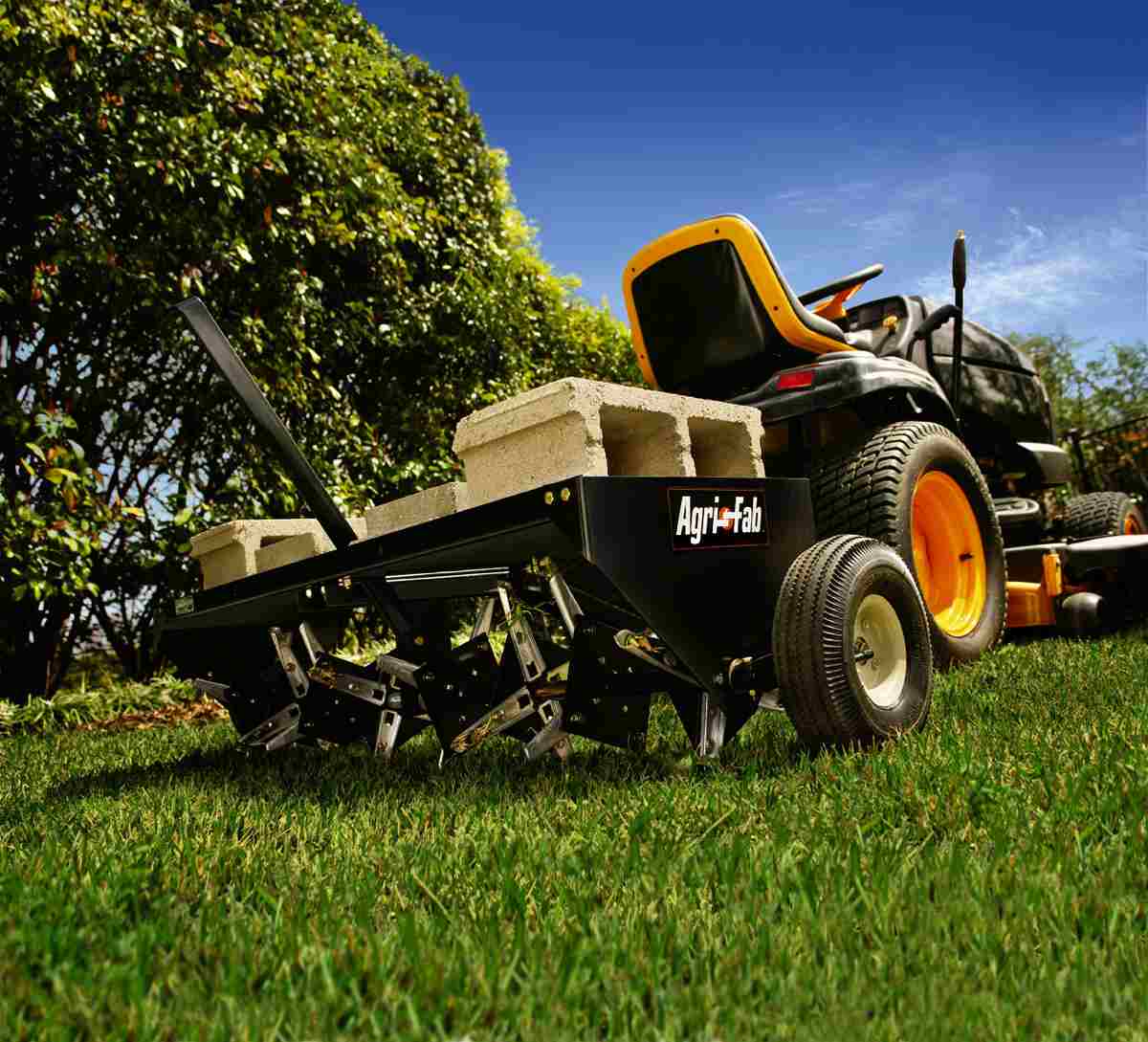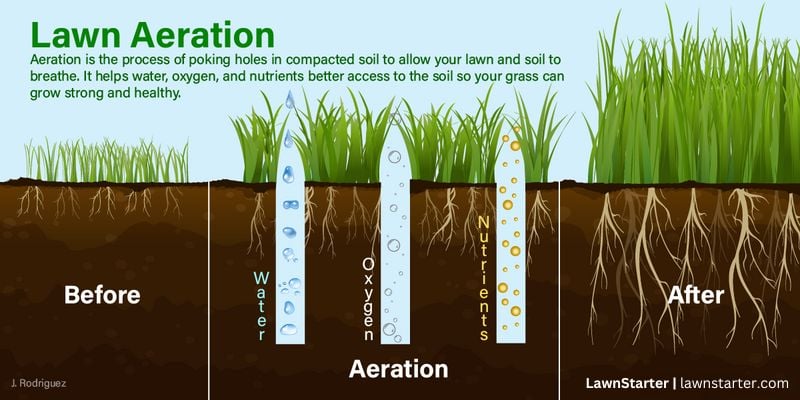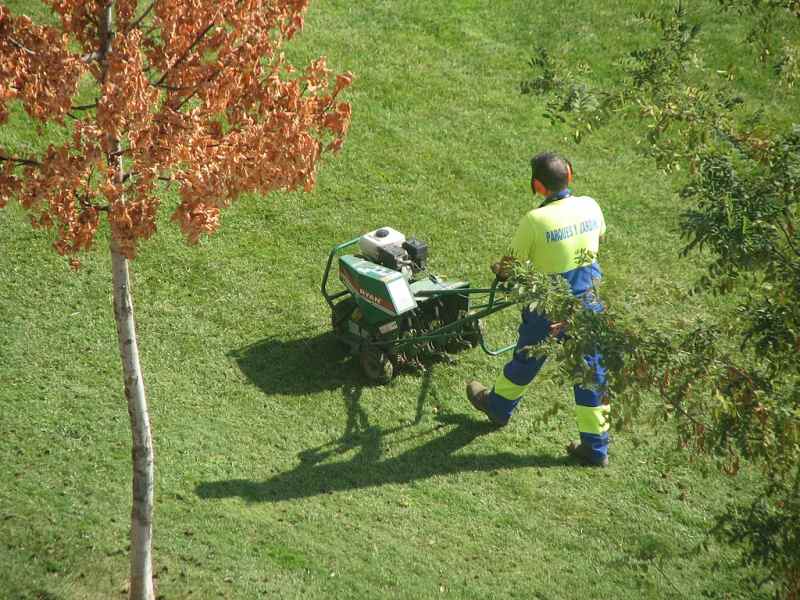
A healthy lawn needs room to breathe and grow. Core aeration creates that space by loosening the soil to allow nutrients to reach the grassroots. But, what is core aeration? Simply put, it’s the process of using a machine to remove 2-inch to 3-inch soil plugs from your lawn.
These plugs are left behind to break down and enrich the soil, while the holes improve airflow, water, and nutrient penetration for stronger grass growth.
Most homeowners should aerate their lawn once a year. Core aeration is something you can DIY (you’ll need to rent an aerator) or you can hire a lawn care service to do this for you. LawnStarter offers core aeration by local pros across the U.S.
Why is Core Aeration Important?

Core aeration is the most popular method of aeration – spike aeration and liquid aeration being the other methods (more on the types of aeration later). Core aeration is preferred by lawn experts because it removes plugs of soil from the lawn, promoting healthier, thicker grass and preventing patchy, thin, and yellow turf.
Here’s why core aeration is important:
- Relieves soil compaction: Over time, heavy foot traffic, lawn mowers, and even your pets can compact the soil in your yard. Certain soil types, like clay or silty soils, are especially prone to compaction. The main purpose of core aeration is to relieve this compaction.
- Enhances air and water exchange: Aerating your lawn opens pathways for air, water, and nutrients to reach the roots, encouraging deeper root growth and healthier, greener grass. It can even allow for fertilizers to penetrate deeper into the soil.
- Helps in thatch control: Core aeration can also make it easier to manage thatch — a layer of dead grass and organic matter that can build up on the soil surface — which helps further improve your lawn’s ability to absorb nutrients.
- Prevents pooling and stormwater runoff: By loosening compacted soil, core aeration allows water to penetrate the ground instead of collecting on the surface or running off.
- Increased drought resistance: Loosened soil and stronger roots mean your lawn is better equipped to withstand dry conditions.
- Reduces erosion risks: Aerating your lawn improves soil structure, which helps keep your soil in place and minimizes erosion over time.
Want to know more about how core aeration can improve your lawn? Read our article, “Benefits of Aerating Your Lawn.”
How is Core Aeration Done?
For core aeration, you’ll need a core aerator, a tool that can be manual or motorized. This device uses hollow tines to pull out small plugs of soil, typically about 1/2 to 3/4 inches in diameter, 2 to 4 inches deep, and about 2 to 6 inches apart.
The cost to rent a motorized core aerator ranges from about $70-$75 for 4 hours to $100-$110 for the day.
Here’s a quick summary of the main steps to core aerate your yard:
- Start by watering and mowing your grass a day or two before you aerate.
- Remove any obstacles like rocks, toys, or garden decorations from your lawn.
- Use the core aerator by pressing it into the ground, and move in a crisscross pattern to cover the entire area.
- Once you finish the first pass, go back and make a second pass. This helps ensure every part of your lawn gets the aeration it needs.
When Should You Core Aerate?
When you aerate depends on the type of grass you have:
- For cool-season grasses, the best time to core aerate is early fall. This gives your grass a chance to recover and fill in any bare spots before winter arrives.
- For warm-season grasses, you’ll want to core aerate in late spring or early summer when your grass is actively growing. This way, grass will bounce back quickly and make the most of the nutrients after aeration.
Pro Tip: To get a lush lawn, combine core aeration with overseeding for better results. The holes left in the soil after aerating let new seeds settle in and connect better with the ground, making it easier for them to sprout.
For more detailed information on aeration and overseeding timing and techniques, check out the following articles:
- Best Time to Aerate and Overseed a Lawn
- How to Prepare Your Lawn for Aeration and Overseeding
- How to Aerate and Overseed Your Lawn
- Aeration and Overseeding Mistakes to Avoid
LawnStarter offers aeration and overseeding as a package in many markets across the U.S.
How Often Should You Core Aerate?

The frequency of aeration depends on a few factors, like your grass type, soil type, how compact your soil is, and the condition of your grass.
As a rule of thumb, you should core aerate your lawn at least once a year. However, if you notice poor drainage, thatch buildup, or your yard experiences heavy traffic, it might be a good idea to aerate twice a year. The type of soil can also have an impact on how often you aerate:
Pro Tip: “Lawns growing in heavy, clay soils and those subject to heavy foot or pet traffic should be aerated twice a year. Once a year should be sufficient for lawns that are established on well-drained soils and experience little traffic,” said Richard Jauron, a retired associate professor of horticulture at Iowa State University.
For a deeper dive into aeration frequency, take a look at our article, “How Often Should You Aerate Your Lawn?”
Core Aeration vs. Spike Aeration vs. Liquid Aeration
Core aeration is the method of choice for most experts, but it’s not the only option:
- Spike aeration: Unlike core aeration, spike aeration pokes holes in the soil without removing any plugs. It’s a simpler process, but it can actually worsen compaction because it pushes the soil deeper into the ground.
- Liquid aeration: In contrast, liquid aeration uses a chemical solution to loosen compacted soil. Like spike aeration, it doesn’t leave any soil plugs on your lawn and is typically easier to apply over larger areas. However, its effectiveness is debatable (Learn more on this in our article, “Does Liquid Lawn Aeration Work?”).
To explore the differences between these types of aeration techniques, check out our articles — “Core Aeration vs Spike Aeration” and “Core Aeration vs Liquid Aeration.”
FAQ About Core Aeration
How Much Does Core Aeration Cost?
The cost of core aeration varies based on factors like the size of your lawn and where you live. On average, homeowners in the U.S. pay about $188 on average for core aeration by a lawn care pro. You’ll find more pricing details in our lawn aeration cost guide.
What is the Difference Between Power Seeding and Core Aeration?
Power seeding and core aeration are two great ways to fix thinning grass and bare spots, but they tackle the issue in different ways. Core aeration is all about improving soil health, which helps strengthen your grass over time.
On the other hand, power seeding (also known as slice seeding) focuses on planting grass seeds directly into the soil by creating slits or rows. This technique ensures the seeds have good contact with the soil, boosting their chances of germinating.
For more information, check out our articles:
What is the Difference Between Dethatching and Core Aeration?
Core aeration is designed to relieve soil compaction while dethatching specifically targets the removal of excess thatch buildup on the soil surface. Dethatching is something you do before aerating.
What Should I Do After Core Aerating My Lawn?
After core aerating your lawn, there are a few important things you can do to maximize the benefits. We’ve covered each in detail in our article, “What to Do After Aerating Your Lawn,” but here are some of the most important:
- Leave the soil plugs on the surface or rake them to speed up decomposition.
- Overseed within 24 hours after aerating.
- Topdress your lawn with a thin layer of compost or quality topsoil. (See our Guide to Topdressing.)
- Water your grass thoroughly.
- Apply a high-quality, slow-release fertilizer.
Don’t Want to Aerate Your Lawn DIY? Hire an Aeration Pro
Core aeration is a key step in keeping your lawn healthy and vibrant. While you can DIY core aeration, renting or buying a core aerator can get pretty pricey, and using the equipment incorrectly may lead to uneven results or even harm your grass.
If you want to give your turf the best chance to thrive, hire a local lawn care pro — he or she will aerate your lawn and improve its health with personalized care and ongoing maintenance.
Main Photo Credit: Agri-Fab, Inc. / Wikimedia Commons / CC0